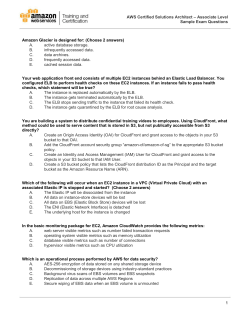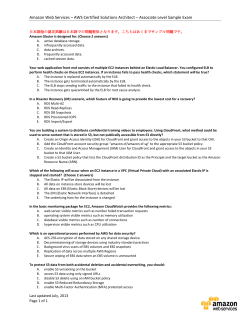
Exercises. Set 2 of 2. To be handed in latest... Exercises are in random order. When the question is to...
Exercises. Set 2 of 2. To be handed in latest on Friday, 10-10-2014.
Exercises are in random order. When the question is to give an approximation
algorithm, then also give a proof for this. For some exercises you may find a
(partial) answer in the literature / on the internet. Always, give a complete
answer in your own words. It should be clear that you understand your own
answer.
1 An instance of the metric TSP-path problem is defined the same as an instance
for the metric TSP but in stead of a tour we need to find a path that visits every
vertex exactly once, i.e., a TSP-tour minus one edge. We may consider different
variants of the problem, depending on the number of endpoints that are given
in the instance.
(a) Give a 3/2-approximation algorithm if no endpoints are specified.
(b) Give a 3/2-approximation algorithm if one endpoint is specified.
(c) Give a 5/3-approximation algorithm if both endpoints are specified.
Hint: Use the idea of Christofides’ algorithm.
2 A special case of the TSP-problem is the one in which cij ∈ {1, 2} for all
pairs i, j. Give a 4/3-approximation for this problem. You may use the fact
that a minimum 2-matching can be found in polynomial time. A 2-matching is
a subset of the edges such that each vertex is adjacent to exactly two of them
and the cost of the 2-matching is defined as the sum of the edge costs.
3 Show that if we do not require that the triangle inequality holds in the kcenter problem, then no α-approximation algorithm exists for any constant α.
4 Give a 2-approximation algorithm for the following variant of the k-center
problem. An instance is given by an integer k and a complete graph G = (V, E)
with edge cost c(u, v) > 0 for any pair of vertices u, v ∈ V such that the triangle
inequality is satisfied. A solution is a partition of V in k sets, V1 , . . . , Vk . The
cost of the solution is the maximum distance within a set:
max c(u, v).
1≤i≤k
u,v∈Vi
5 Give a PTAS for the following problem.
Minimum quotient problem:
Instance:
Positive integers a1 < a2 < · · · < an
Solution:
S1 , S2 ⊂ {1,P2, . . . , n}, with
P S1 , S2 non-empty and disjoint. Assume
that
a
≥
i
i∈S1
i∈S2 ai .
P
Cost:
Pi∈S1
i∈S2
Goal :
ai
ai
Minimize cost of the solution.
Hint: first give a pseudo-polynomial time algorithm and then round the instance
(as we did in the PTAS for knapsack).
1
© Copyright 2025



















![HOME TREATMENT OF BPPV: BRANDT-DAROFF EXERCISES [ ]](http://cdn1.abcdocz.com/store/data/000138030_1-95f56718c005f701249a339b29c2db3c-250x500.png)

